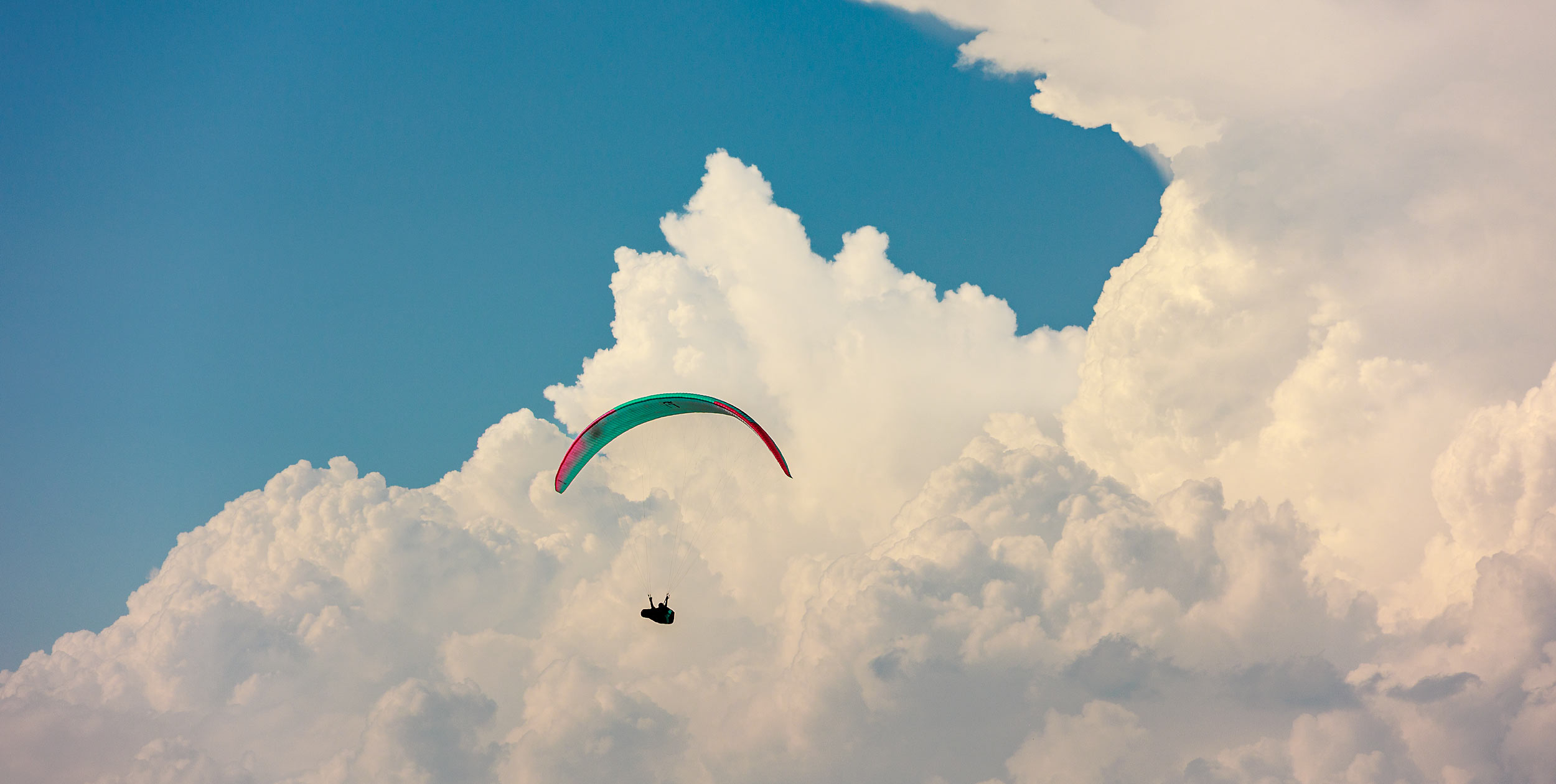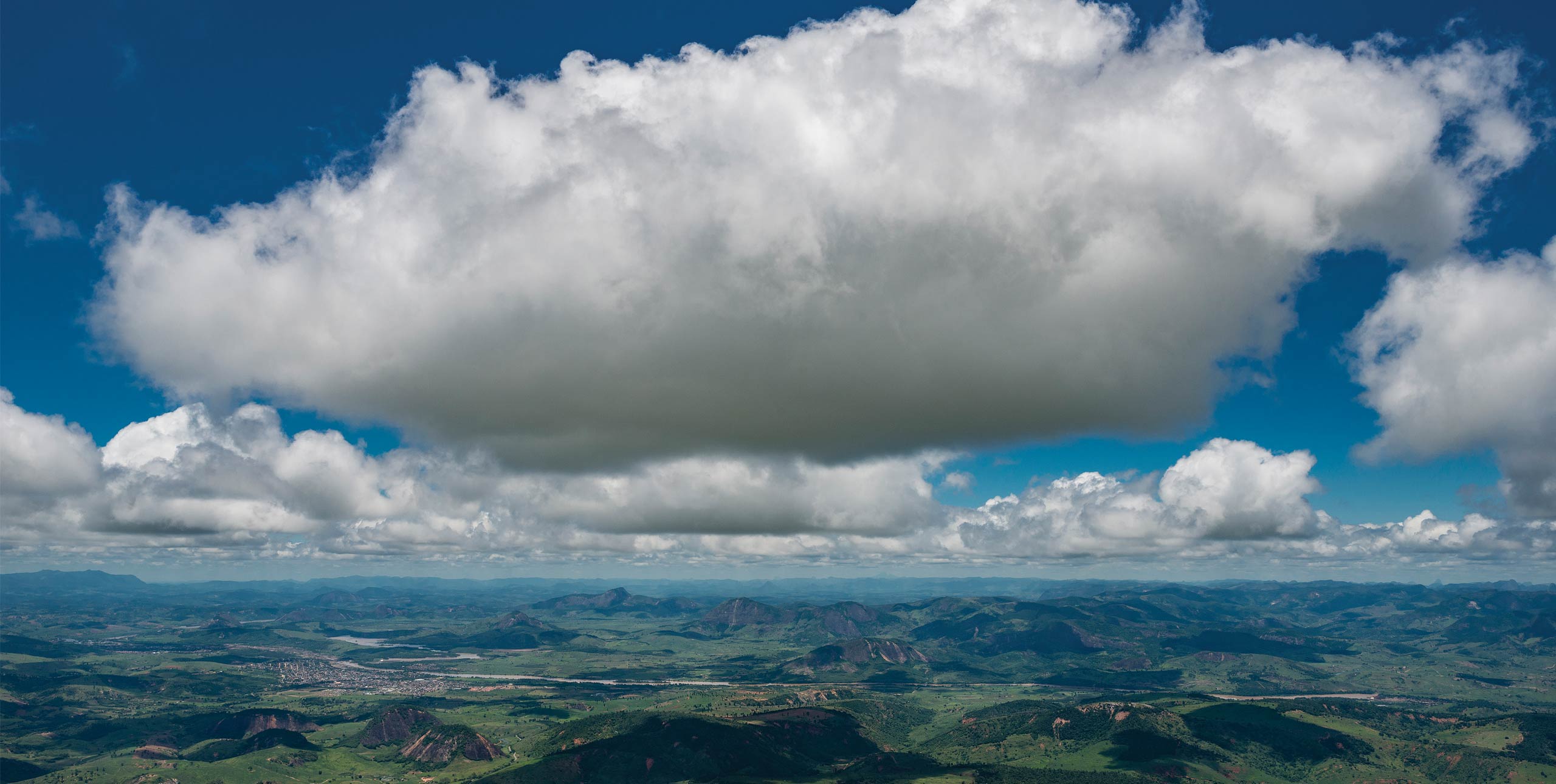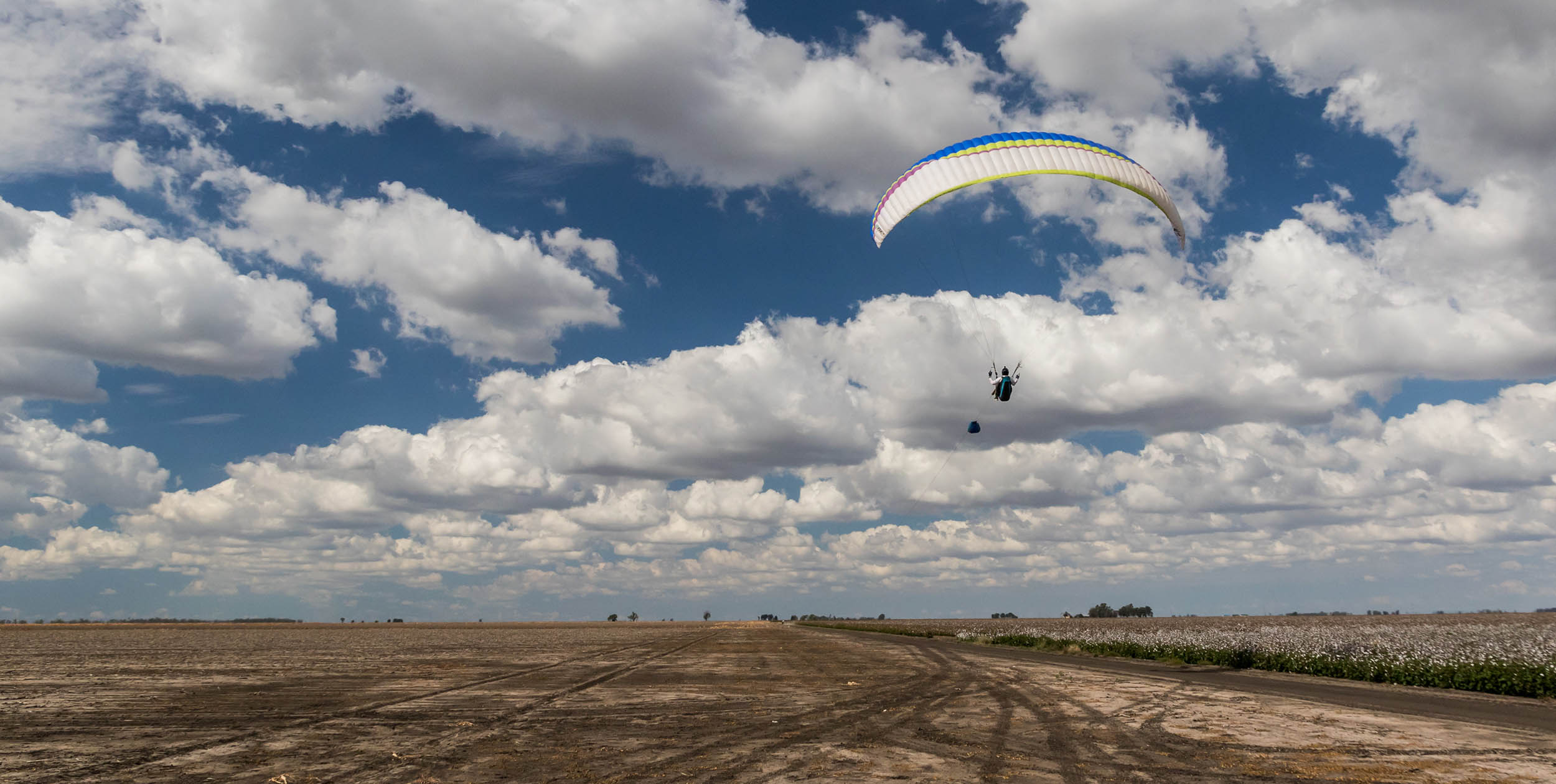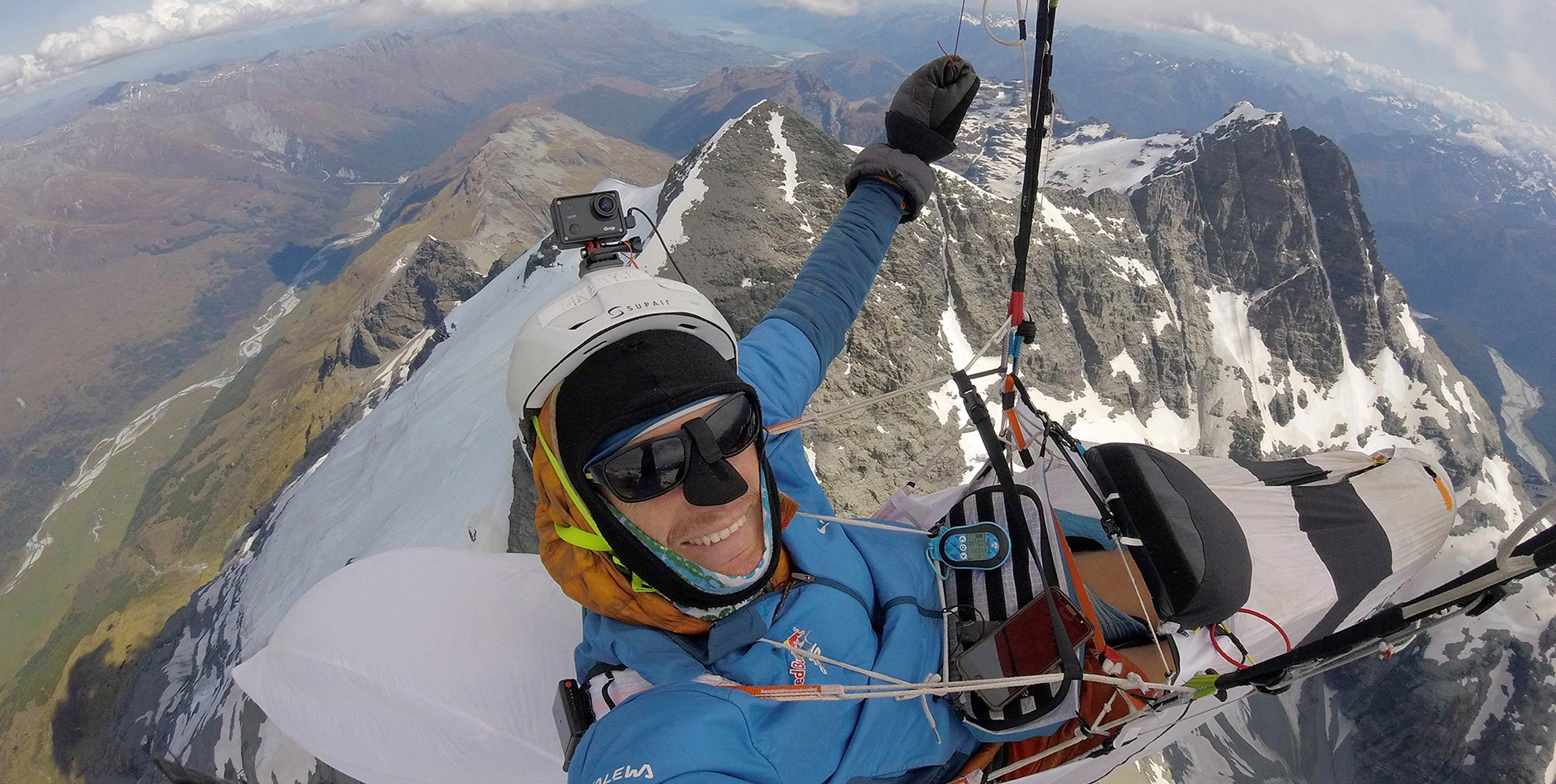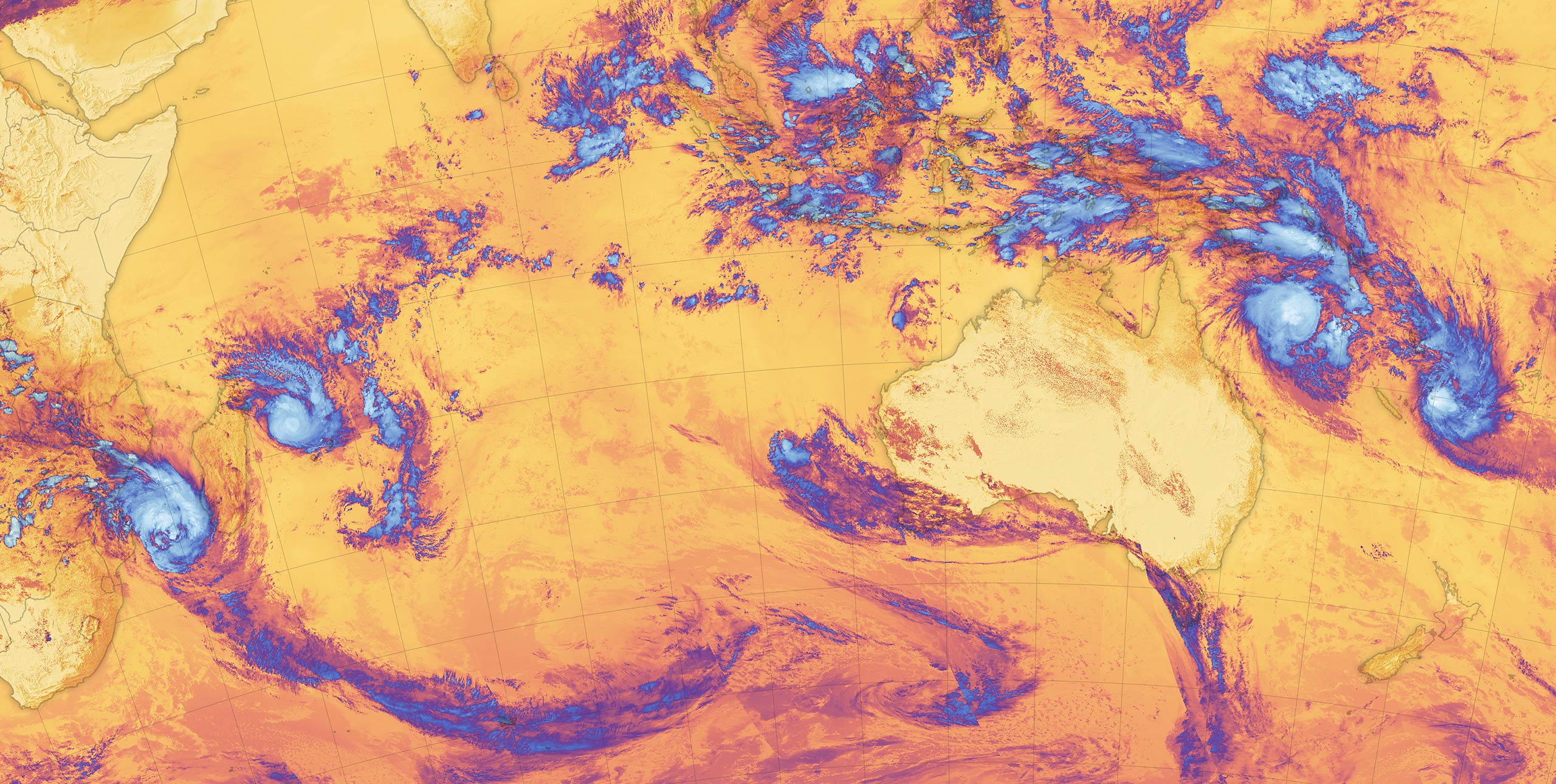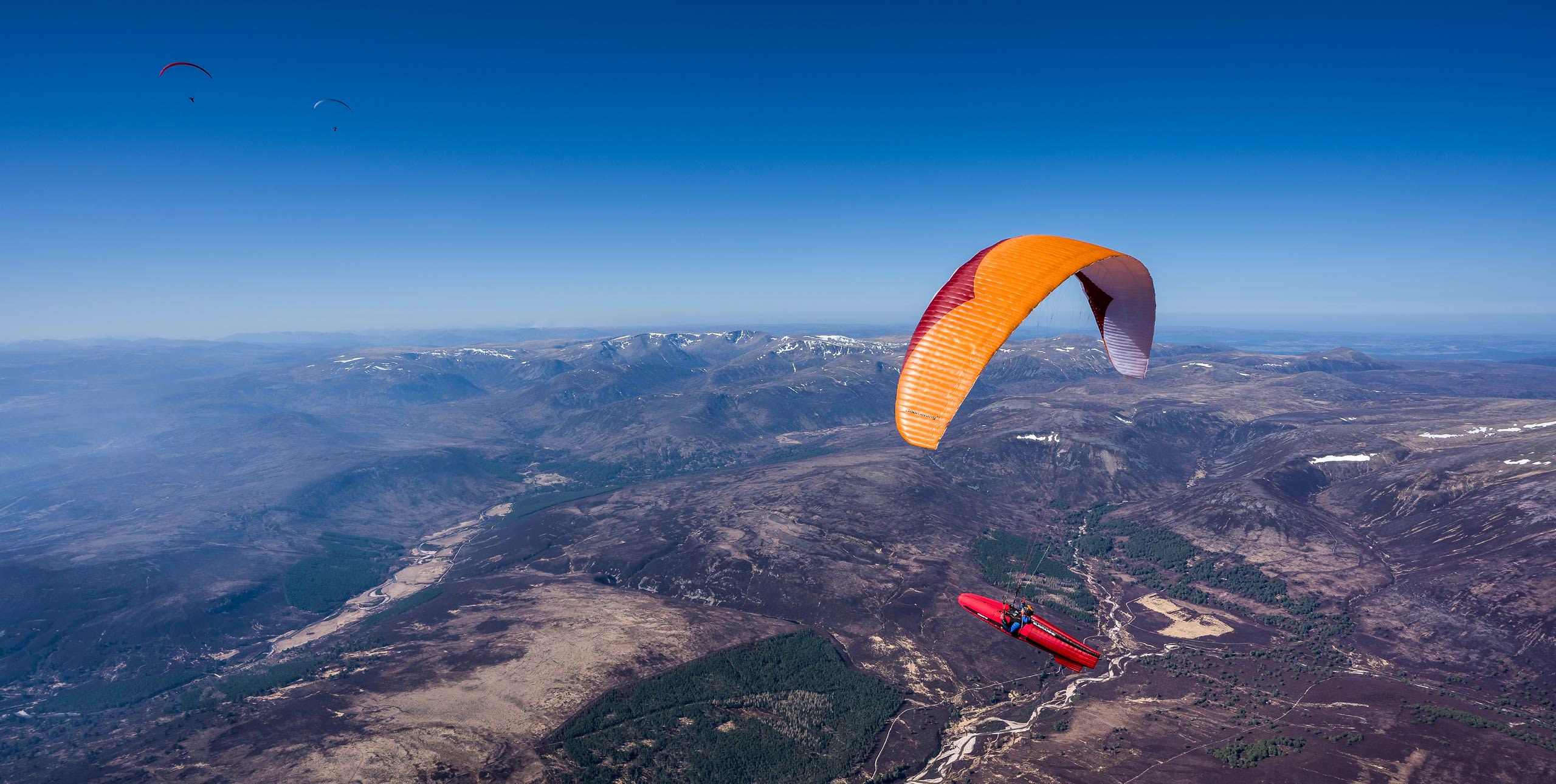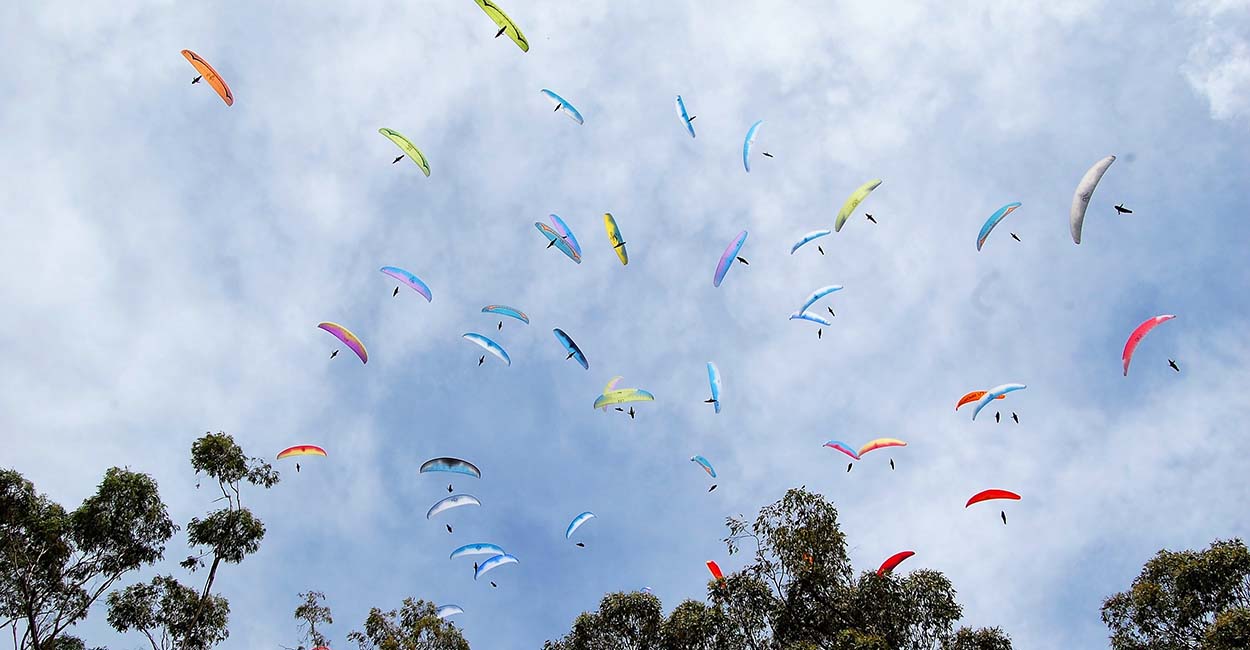
Why do birds fly in circles? Which way should you turn? Where’s the core going to be? Bob Drury picks up some tips from some of the best pilots in the world about how they thermal, in the final part of Cross Country magazine’s definitive guide to thermalling
IT’S ONE OF the most sensorially exciting moments in any pilot’s life. I doubt if anyone who’s experienced it could ever forget it. Your heart pounds, your palms sweat and your mouth goes dry.
The brake lines snap tight and the force of your quarry is enough to throw you violently to one side. It’s as though you’ve just hooked your first big game fish and it’s now wriggling and thrashing at the end of the line.
Except this isn’t ‘Fishing Weekly’ you’re reading and what I’m talking about is no living animal. You’ve got your first proper thermal, hook, line and sinker; all you’ve got to do now is make sure it doesn’t get away.
The ensuing seconds are both intoxicating and rife with decision: left or right, crank it hard, gently drift in or do you just straight line it in even deeper? To give yourself the best chance of getting it right you need to have a good idea of the shape, size and make-up of a thermal. Where are the strongest bits, the weak bits and the edges?
Thermals are rarely made up of equal lift. The ground which created the thermal would have been warmer and colder in different places and so a thermal will have hot spots and cool spots. Hot spots rise faster than the cooler spots and form cores. The fastest way to climb in a thermal is to constantly stay in the hottest part of the airmass as it rises the quickest. In a windless environment, cores will normally be drawn in to the centre of the thermal.
However, in reality we are rarely ever in a windless environment. Inevitably there will be a valley wind or the true meteo wind blowing on and affecting the structure of the thermal and so the cores won’t necessarily be in the centre of the climb. Instead, the wind will shape the thermal into a teardrop shape.
As the strongest lift is climbing faster it has more vertical velocity than the weaker lift and so is less affected by the wind. The weaker lift is more easily affected by the horizontal wind and gets blown downwind leaving the strongest lift upwind. This is one reason why good pilots search for strong climbs a long way out from the hill on windy days.
Thermalling technique with Lee Tryhorn in Spain
In addition, because the thermal actually has a mass of its own, the meteo wind rides up the front face of it as if it was a hillside and creates dynamic lift. This is why we can sometimes soar up the sides of cumulus clouds and why pileus caps form on the tops of clouds where the wind accelerates over them.
But before you can worry about finding the core of the thermal, you need to fly deep enough into it to be able to turn a 360 without falling back out. To do this many pilots employ the ’count of four rule’. Once you hit a thermal you fly straight on into it counting, “One banana, two banana, three banana, four!” If you’re still inside the thermal by the time the fourth banana comes along, then it should be big enough to climb in.
But which way are you going to turn first? Gliders react differently as they enter thermals depending on which angle they enter the thermal from. On first encounter you can’t be sure exactly where the thermal is in relation to you or what shape it is. So it’s best to follow some basic guidelines.
First and foremost you should try to establish a 360 pattern, unless you are very low and trapped against the landscape in a strong wind, rather than flying in figure-of-eights as soon as you hit a thermal. The reason why birds wheel effortlessly in circles above your head on a sunny day is because this is the most efficient way to fly and the best way to keep track of a thermal.
Greg Hamerton explains how to thermal
Ozone test pilot, Russell Ogden, told me: “If I feel a strong pull to one side then it’s obvious which way to turn, but if I’m unsure and feel that I could go either way I’ll turn one way for a couple of seconds then turn back the opposite way, just as I would if I drove onto a roundabout. Now I am in the right position to fly around the centre of the thermal without falling into the sink around it.”
If you’ve hit the thermal whilst soaring along a hillside you will also have to think about keeping yourself safe in relation to the landscape. Turn out from the hillside and fly far enough away so you can throw in your first 360 without hitting it.
That first turn is usually the worst as you haven’t established an angle of bank yet and the glider will often pendulum behind you after the first 180 degrees and want to sit back with little energy for the turn.
Quickly whipping the brakes up to pitch the glider back in front of you may feel unnatural as the scenery rushes towards you, but it will put energy back in to the glider and give it the speed to carry on turning.
Once you’ve made the first 360 the glider should settle down into a more regular pattern and the scenery won’t seem to rush at you so quickly every time you turn to face it.
Tandem thermalling training with Greg Hamerton
Once you’ve managed to complete three 360s in a row in constant lift with the vario singing all the way around it’s time to start exploring and looking for the strongest lift.
If you don’t suspect there to be much wind then a simple search pattern will work. As you hit stronger bits of lift on your way around the circle straighten up slightly and push deeper that way for a moment before turning inwards again. Each time you do that you should be moving closer towards the core.
Former world record holder, Godfrey Wennes, told me: “We teach our students to ’follow the sound’ of the vario to chase the thermal. Fly to make and keep the sound at a peak.
“Fly straight as the sound gets louder and turn if it starts dropping. Learn the tones and set acoustic delays to anticipate the top of the core (peak sound).
“In most cases of strong lift / cores you need to turn before the peak evens out otherwise you fall out the other side and need to do an inefficient hook turn to get in again.
“The pendulum swing of a paraglider can also play havoc with the sounds – be aware that a sudden sharper turn will increase tone for a moment as you wing over higher thus giving the impression you have hit the core.”
Godfrey cautions, “The inexperienced will fall for that trap every time while the steady turner will out climb him.”
If there’s any wind about you need to find the upwind / leading edge of the thermal so you can locate the strongest lift by finding the core and the dynamic lift of the wind blowing up the front of the thermal.
You should be able to see the glider slow down in relation to the landscape each time you face into the wind. If you straighten up for a moment, each time you face the wind you will slowly edge your way towards the upwind / leading edge of the thermal, and the best lift.
On reaching the upwind side of the thermal you might feel an increase in lift as you encounter the dynamic lift where the wind is being forced up the side of the thermal, but then, if you fly too far, you’ll fall out into the sink.
Falling out of the upwind side of the thermal is never as bad as falling out of the downwind side but if you do then quickly turn the glider around and fly back downwind, through the dynamic lift and back into the strongest lift.
In comparison falling out of the back of the thermal is much worse. Then you’ll fall into heavy sink and have to turn back into wind and fly slowly back through the sink only to get into the weakest lift. Whenever you see someone fall out of your thermal and appear to free fall away, you usually find that they have fallen out of the downwind side of the climb.
What are the actual mechanics of what we are trying to do? What’s the best way to control your glider and get the most from it as you search?
Hugh Miller, former British champion, offers this advice: “Damp out the surges with the outside brake. Try and keep the glider calm and settled above you. Keep the roll rate as constant as possible with weightshift controlling the glider’s dives with sharp stabs on the outside brake, holding where needed, always looking and leaning into the circle. Don’t let the thermal bully you. Fly actively.”
Russell Ogden says: “You need to be able to crank it tightly or switch effortlessly into a smooth languid turn. A common mistake pilots make is that they don’t turn tight enough in thermals.
“You need confidence in your skills to be able to bank the wing up and force it into a tighter circle once you have located the core and this can be hard as the air in the core might well be turbulent. It is important to know your wing and be able to use the pitch and energy to get the roll right without spinning.
“If I want to straighten a little during the 360, I keep on the weightshift but use a touch of outside brake. This changes your direction without upsetting the wing too much. When I’m ready to continue the 360 I release the outside and resume with the inside. That way you do not create too much unnecessary roll and are always ready to tighten because your weightshift is there already.”
Russell adds, “The more aggressive the thermal is with me, the more aggressively I fly. The gentler the thermal the smoother I fly, holding the brake handle as though it were a fragile glass of wine that I mustn’t break or spill.”
Using the outside brake to vary your turn radius, you can start to explore the thermal, and exploration is everything. Triple British vice champion, Innes Powell, once told me: “If you do two 360s the same you’ve let yourself down. You’ve missed an opportunity to gather more information about the thermal.”
Former female world champion, Louise Crandal points out that you need to open your mind to all the information that’s available: “It’s important to be aware of any changes in the air. When you see a sign of better lift elsewhere react to it and change pattern to take you there.
“While I’m thermalling I give all my attention to smell, temperature, change of wind direction and of course, all the information I get from the glider and vario.
“I change turn direction whenever it makes sense to and I move around the sky in a constant search for better lift. It sounds exhausting but it’s not. Vultures sleep while they thermal and we can do the same. Once it becomes our flying style it’s just like riding a bicycle, but much more fun.”
Louise, who has her own trained Steppe Eagle that flies with her, knows exactly how much we can learn from birds: “Follow the birds. They’re the masters of the sky, so do what they do. It’s as simple as that! I had to stop thinking in the usual patterns I had trained myself to use over the years and just follow.
“Suddenly I was thermalling better than ever before. I realised that birds don’t fly in circles. They turn in thermals but never in neat 360s. Every single lap is different and they constantly adjust and move to where the thermal is stronger or even move a couple of hundred metres to the side to find better lift.
“Whenever you get the chance to fly with a bird try to follow it as closely as possible. Depending on what kind of bird you meet it might try to get away from you, but even if it chooses to leave the thermal, if you have the height it’s worth following it.
“Soaring birds automatically stay in lift for as long as possible, even with an annoying paragliding pilot on their tail, so there’s always something to learn.”
Indeed, good pilots always want more from the thermal so they explore all the time. They often don’t turn very tightly in cores because they are wandering about the gaggle picking off the best bits of lift. They do this by staying alert to all the information they can get.
If they see a glider or a bird rising faster than they are, they fly straight over them and profit from the better lift. Sharing a thermal requires an acceptance on the part of all the participants that their ability to roam wherever they like in a thermal has been compromised. However, the additional information all the other pilots floating around you in the gaggle can give is immeasurable.
Thermalling is all about mental mapping, staying alert to new information, deciphering the feedback your glider gives you and exploration within the thermal. Mastering it requires you to have a good mental image of the air and then lots and lots practice to familiarize yourself with the sensations the glider and the thermal give you.
How to join a busy thermalL
Joining a busy thermal is like jumping onto a playground roundabout. If you try and jump straight in the middle, or worse still, against the flow, you’ll cause carnage. Instead, run along on the outside of the roundabout until you find a slot or get offered one by someone, then slot quietly into place.
Cross Country magazine is packed with articles like this: Subscribe and fly better


